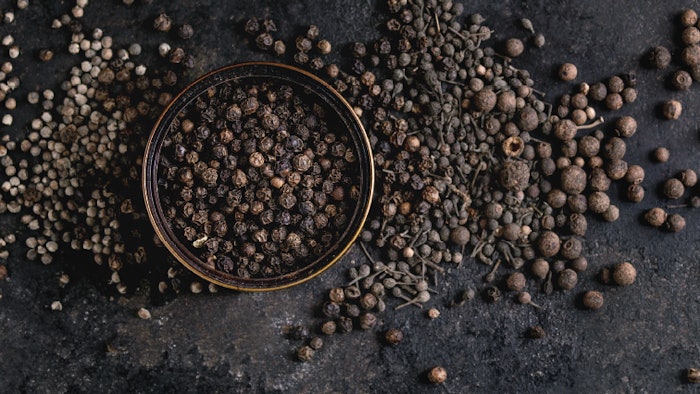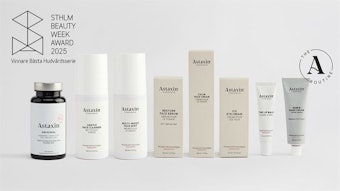
The word monk brings to mind an enlightened individual, high in the mountains, treading space and time in perfect balance. Monk’s pepper (Vitex agnus-castus) offers several facets of this vision, promoting all-around wellness, hormonal balance and skin benefits, as will be detailed later in this article.
Monk’s pepper is a shrub native to the Mediterranean region and has long been believed to be an anaphrodisiac, earning it the nickname of chaste berry or chaste tree.1 The name vitex is derived from the Latin word vieo, meaning to tie up or to weave, while agnus-castus refers to chaste in both Greek and Latin.1
The herb has been dubbed monk’s pepper for several additional reasons. For one, its dark brown and black fruits are the size of peppercorns and reportedly have a pepperish aroma and flavor.2 In fact, some sources report the berries were dried and ground up for use as a weak substitute for pepper in Mediterranean spice mixtures.
Also, in the 6th century, monks undertaking vows of chastity were said to ingest the dried and ground berries for their perceived effects of reducing sexual desire.3
Monk’s pepper has been known throughout history for its medicinal properties, being recognized and referenced in many health practices including ayurveda, Unani medicine, Chinese traditional medicine, Malay traditional medicine, European medicine and ancient Greek medicine.4 According to the National Institutes of Health, chasteberry extracts were used to treat a variety of gynecological disorders and skin conditions such as rashes. Today, it is promoted as a dietary supplement for symptoms of premenstrual syndrome, breast pain associated with the menstrual cycle, infertility and other conditions.5
Related: Ingredient Tips from Your Favorite Skin Care Suppliers
Active Constituents and Health Benefits
Monk’s pepper berries contain numerous active constituents, according to The American Family Physician (AFP): flavonoids including kaempferol; iridoid glycosides such as agnuside and aucubin; and the essential oils limonene, cineol, pinene and sabinene. Additionally present are diterpenoids, progestins and ketosteroids.6, 7 Progesterone, hydroxyprogesterone, testosterone and androstenedione have also been isolated from the leaves and flowers of the herb, although only in trace amounts.8 Several fatty acids have been identified as well.
The berries’ therapeutic value is attributed primarily to effects on various hormones, especially prolactin and progesterone.6-8 According to one molecular biologist, chasteberry increases dopamine activity in the brain, resulting in the reduction of prolactin release—and when too much prolactin circulates in the body, it can cause disturbances in the menstrual cycle, and deficiencies of estrogen in women and testosterone in men.9
Also, according to AFP, within the past 10 years, some high quality, double-blind randomized controlled clinicals have found that chasteberry can reduce some symptoms of PMS including breast pain or tenderness, edema, constipation, irritability, depression, anger and headaches. Additional studies have shown some efficacy for improving menstrual irregularities and fertility disorders. However, no clinical data reportedly exists to support claims for reducing sexual desire.6
Read more about the skin benefits of monk's pepper in January's Digital Magazine...
Rachel Grabenhofer is the managing scientific editor of Cosmetics & Toiletries, Skin Inc.’s sister brand for cosmetic chemists. She’s a member of the Skin Microbiome Council and Society of Cosmetic Chemists, and for several years, led judging panels to honor the best ingredients in cosmetics.











